2024 Mercedes-Benz eSprinter plugs electric vanlife into daily work

Mercedes-Benz recently revealed its new generation of eSprinter electric vans. It’s made efficiency and flexibility among the core focus points so that it can position the lineup for far more than last-mile deliveries, and a future in which vans—and vanlife—with gas and diesel engines will be on the retirement path.
The company boasts that it’s the market leader in Europe, with a share of about 30% of the electric van market already out of its shorter-range, front-wheel-drive eSprinter, but now it’s moving on from that and taking aim at North America—by ramping up the longest-in-length and longest-range versions of its new electric vans first.
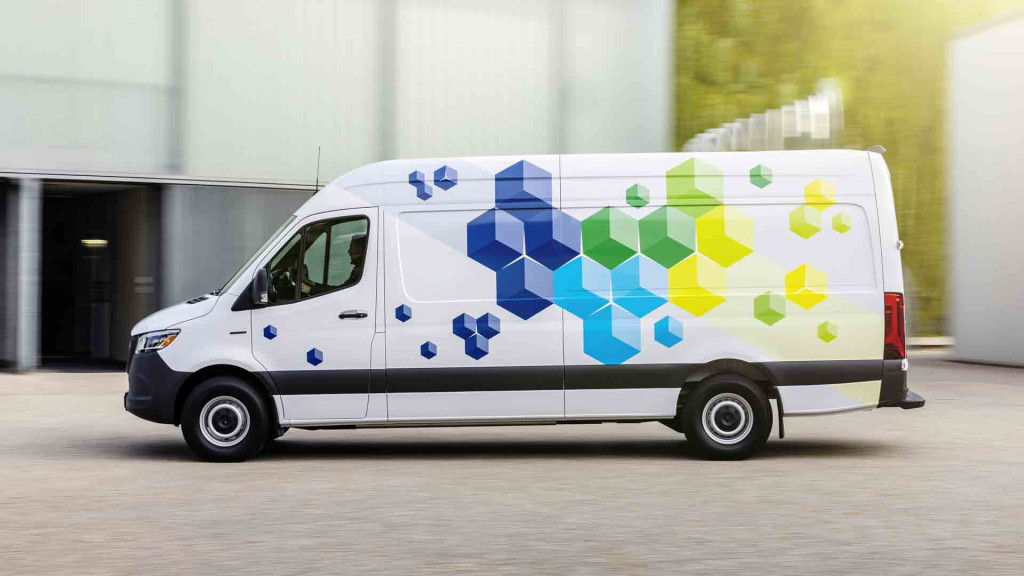
2024 Mercedes-Benz eSprinter
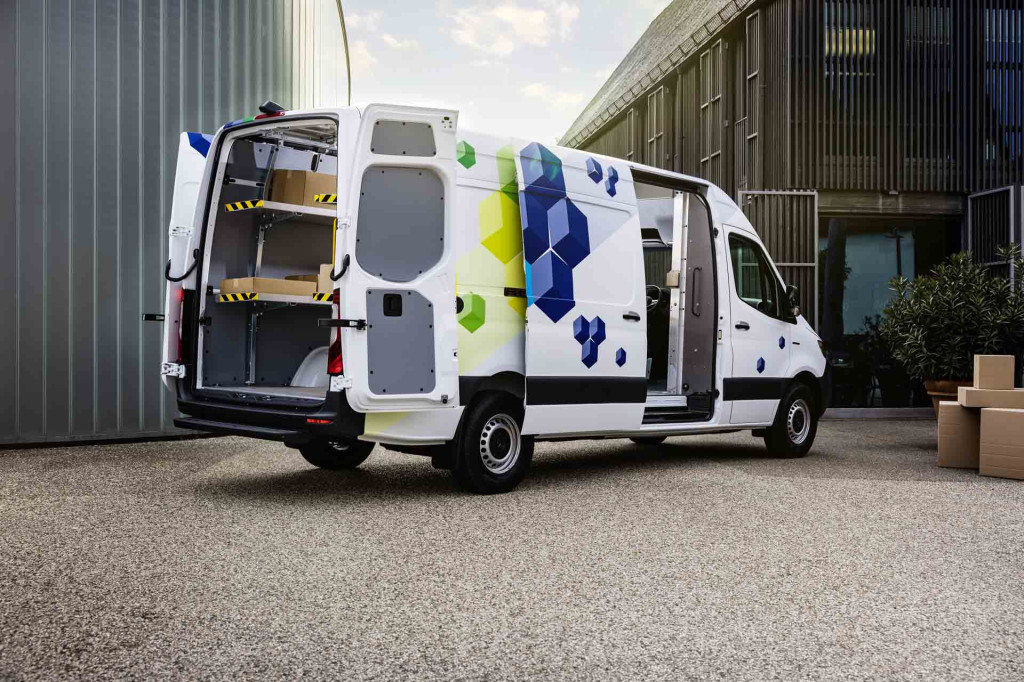
2024 Mercedes-Benz eSprinter

2024 Mercedes-Benz eSprinter
The new eSprinter was developed around the concept of three modules, and built for ease of manufacturing while offering a wide range of potential variants and use cases. There is a front module under the hood, where the onboard charger, high voltage components, battery cooling and air conditioning reside. In back, there’s a new electrified rear axle allowing 134-hp or 201-hp outputs, with torque up to 295 lb-ft. In the middle, the flat battery is between the axles and helps with the center of gravity. Across the lineup, the front and rear modules are exactly the same for ease of manufacturing, with only the battery size varying.
LFP for all
The eSprinter will be offered in multiple lengths, with three different batteries in Europe—56 kwh, 81 kwh, and 113 kwh—although the U.S. will only get the mid-size and larger packs. They all use a lithium iron phosphate (LFP) chemistry that’s free of cobalt and nickel, in the form of prismatic cells from CATL. They’re ideal for commercial use, Mercedes says, as there’s less degradation per driving cycle.
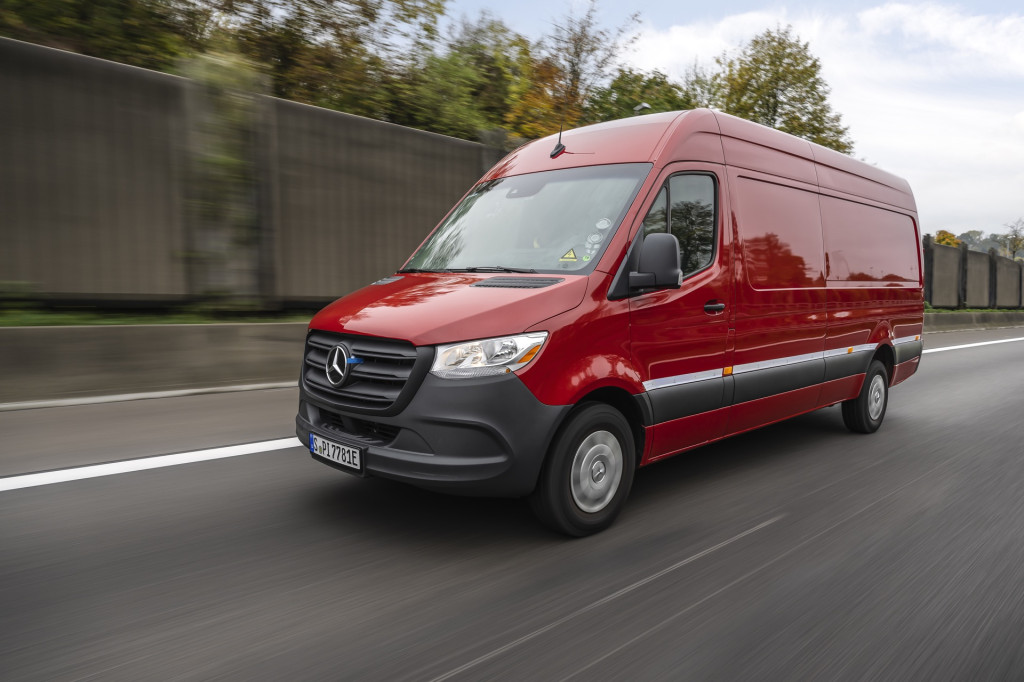
Mercedes-Benz eSprinter range and efficiency test
Mercedes-Benz has already teased that its vans might be leaders in real-world efficiency and range. It says that with that largest 113-kwh pack, on the European combined WLTP cycle—more optimistic than the EPA cycle—its range will be up to 249 miles (400 km). And looking only at the city portion of the cycle, its range extends to early 311 miles (500 km). Mercedes bases these numbers assuming 30-35% of the maximum load.
Charging and regen: Like a shorter-range car or SUV
U.S. versions will charge at up to 9.6 kw with a 240-volt wallbox, and the eSprinter can charge at up to 115 kw with a CCS fast-charging connector, allowing a 10-80% charge in about 42 minutes.
That’s probably not good enough for multi-state deliveries, touring bands, or cross-country vanlife and camper-van upfits quite yet, but it’s there for longer hauls.
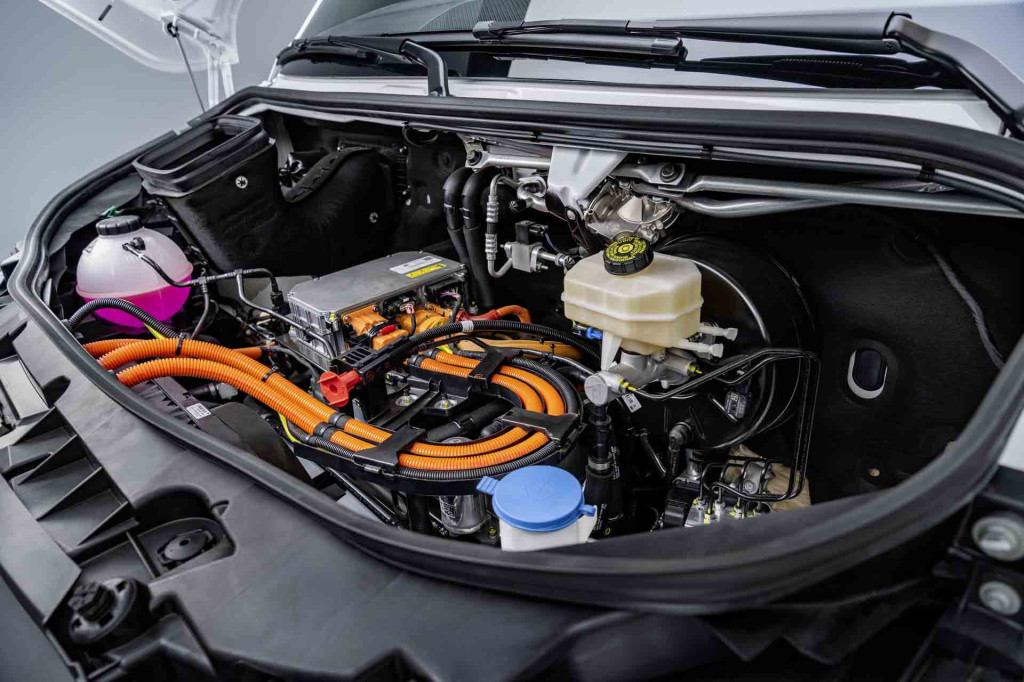
2024 Mercedes-Benz eSprinter
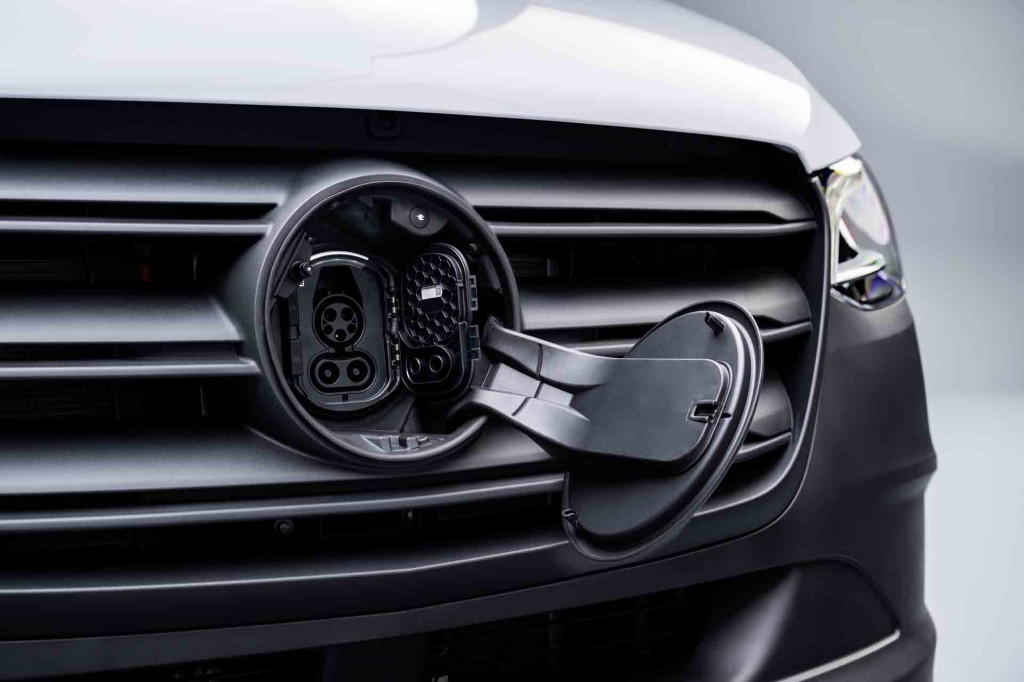
2024 Mercedes-Benz eSprinter
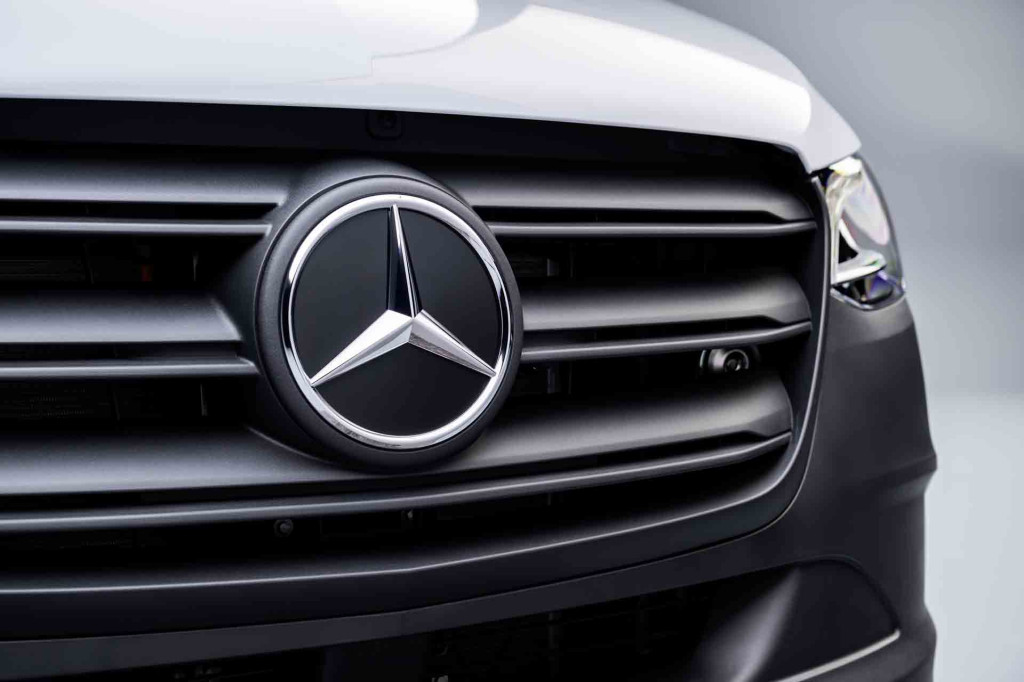
2024 Mercedes-Benz eSprinter
Mercedes-Benz boasts that its Automatic recuperation mode, based on technology shared with Mercedes passenger vehicles, can significantly boost range by using driver assistance sensor inputs as well as topography and mapping information from the navigation system to tweak the level of regenerative braking at any given moment. For example, going up a hill it will essentially allow coasting if the driver lifts off the accelerator, yet when approaching a roundabout, it will ramp up regen so as to reduce the need to use the friction brake pads. Mercedes also says that it’s including a route planner that will help optimize charging stops.
To gain that efficiency, the company has also worked to smooth underbody aerodynamics, chosen low-rolling-resistance tires, and added a heat pump as part of a system that also uses waste heat from the powertrain.
The eSprinter will have pre-heating and pre-conditioning as standard, allowing a start time for the vehicle, at which time both the cabin and battery pack will be warmed, even if the vehicle isn’t plugged in—an especially important detail for the vans’ LFP cells.
Aimed for the upfit, not the highway
Because the drive motor sits in the middle of the rear axle, the company says that chassis models are possible and upfits are easier—including models like shuttle buses, ambulances, or even flatbed trucks, in addition to the expected focus on the delivery market.
Ford is also positioning its E-Transit electric vans for the upfit, but it’s doing so with a focus on a different part of the market. With a 68-kwh battery pack good for 126 miles on the EPA cycle, and 115-kw CCS charging, it’s aiming for fleets that don’t need to go so far each day.
Another rival, potentially, is the Rivian EDV700, which has only been delivered to Amazon so far. It has a 135-kwh battery pack and drives the front wheels; the company said that results in a 201-mile range by the EPA cycle, although Amazon versions are limited to 150 miles of range.
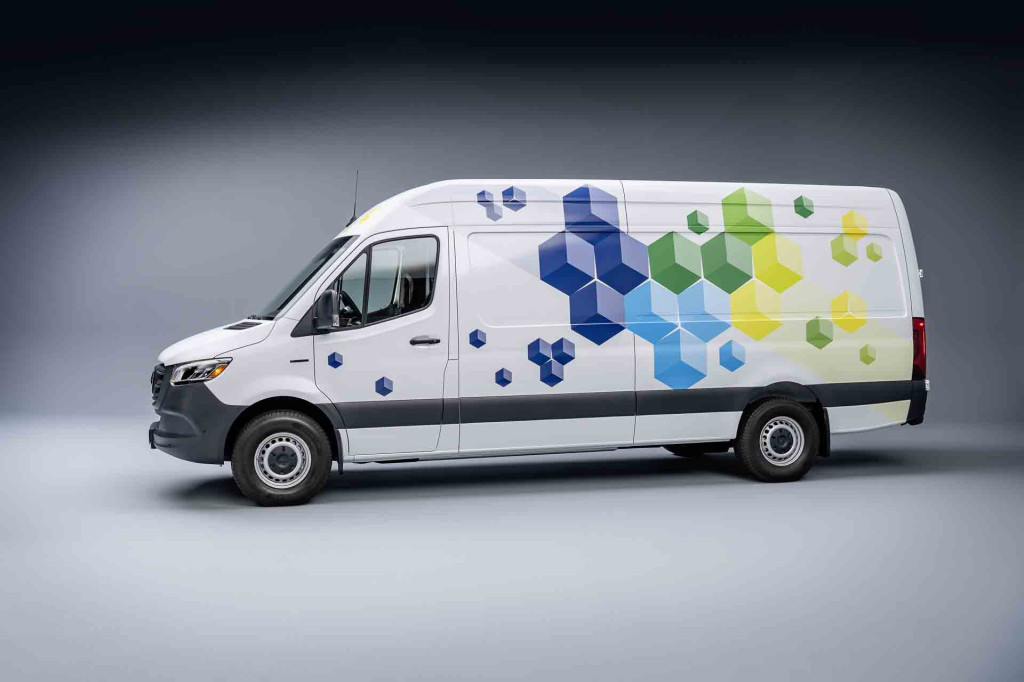
2024 Mercedes-Benz eSprinter
The U.S. launch form of the eSprinter electric van will be a very long van, even by American standards: 280 inches long, on a 170-inch wheelbase, and the high-roof version boasts 488 cubic feet of cargo volume.
In what will be a first-ever moment for this oldest of automakers, it will start building a new product overseas before doing so in its home market. With production due to start in summer 2023 in Charleston, South Carolina, deliveries for the U.S. and Canada are due in the second half of 2023. Then a market launch for Europe will follow late in the year, with plants at Ludwigsfelde and Dusseldorf, Germany, adding production for about 60 potential global markets.
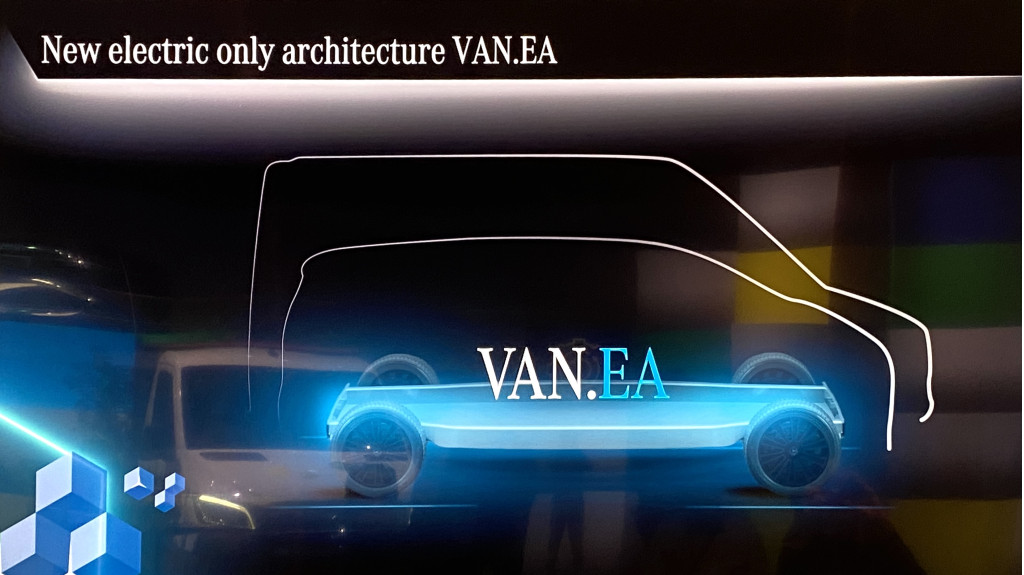
Mercedes Van.EA platform
Despite all this, the company is already working on three dedicated EV platforms, including one called “Van.EA” that will underpin mid-size and large vans and will mark the start of a shift entirely to electric vans. Although this eSprinter incorporates a lot of collective smarts from Mercedes passenger vehicles, those future models could take a modular packaging approach to the next level—and enable electric vanlife to truly take off.